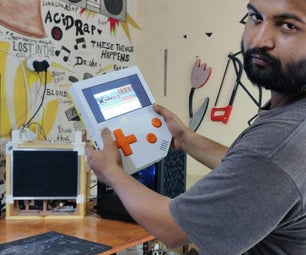Introduction: Raspberry Pi USB Picture Frame
Raspberry Pi USB picture frame
Raspberry Pi plays automatically images from inserted USB flash drive and is shutdown by pressing the button inserted into the device.
feh is used to display the images from USB and python script to shut down the device.
In this instruction I am not explaining how to add button on raspberry pi between pins 9 and 11.
Step 1: Prepare Raspberry Pi
Install standard rasbian package from www.raspberrypi.org by following the image installation guide. NOOBS or Raspian will do just fine too.
Setup Raspberry Pi according to your preferences. Only thing to ensure is that Raspberry start on GUI. Instructions can be found also from www.raspberrypi.org. You need keyboard on first startup. You can use either console directly from Raspberry Pi or as I prefer SSH to connect the device. If you use latest Rasbian and want to enable ssh on first startup you need to add file named ssh on /boot/ directory of SD card.
Install feh
Update rasbian and install feh. Network connection is needed.
sudo apt-get update sudo apt-get upgrade sudo apt-get install feh
Create mount point
Mount point is needed to ensure all USB flash drives are treated same way. If USB is not mounted it will show under media as the way flash drive is named. For example KINGSTON would be ’/media/KINGSTON’ and could not be detected by feh if different flash drive was used previously
sudo mkdir /media/usb
Step 2: Shutdown Button
This phase can be skipped if button is not used to shutdown Raspberry Pi. I do recommend using this since shutting down the Raspberry Pi simply by unplucking the device can cause the SD or USB flash drive corruption.
Connecting the GPIO 17 to the ground will cause shutdown to be performed. You may use other pins also but code need to be changed accordingly.
Create shutdown.py
nano shutdown py
And paste the following code
import RPi.GPIO as GPIO
import time
import os
# GPIO 17 = pin 11
# GND = pin 9
GPIO.setmode(GPIO.BCM)
GPIO.setup(17, GPIO.IN,pull_up_down=GPIO.PUD_UP)
while True:
print GPIO.input(17)
if(GPIO.input(17) == False):
os.system("sudo shutdown -h now")
break
time.sleep(1)Ctrl-x and Yes and Enter to close editor and save changes
Step 3: Auto Start
Update rc.local
Update rc-local so that USB is automatically mounted and shutdown.py is loaded at startup
sudo nano /etc/rc.local
Into the rc.local before ’exit 0’ add the following lines to mount USB flash drive and to start shutdown.py on background process
sudo mount /dev/sda1 /media/usb sudo python /home/pi/shutdown.py &
Ctrl-x and Yes and Enter to close editor and save changes
Update LXDE autostart
Update LXDE so that feh is started automatically on startup
sudo nano ~/.config/lxsession/LXDE-pi/autostart
Instert following lines at the end of autostart
@xset s off @xset -dpms @xset s noblank @feh --quiet --fullscreen --borderless --hide-pointer --slideshow-delay 30 /media/usb/
Ctrl-x and Yes and Enter to close editor and save changes
Step 4: Testing
Add some pictures on USB drive.
Mount USB by running
sudo mount /dev/sda1 /media/usb
And see if you can see the content of USB drive
ls /media/usb
Test feh by running following on command line. You need to have pictures on USB ?
feh --quiet --fullscreen --borderless --hide-pointer --slideshow-delay 1 /media/usb/
Test shutdown by running
sudo python shutdown.py
and press the shutdown button (connect the proper pins).
Step 5: Additional Info
Solution that will turn TV on and off using CEC
Thanks to RichardW58 for this solution.
Install cec-utils:
sudo apt-get install cec-utils
add following lines in crontab -e
# Turn TV on 0 8 * * 1-5 echo "on 0" | cec-client -s # Turn TV off 0 16 * * 1-5 echo "standby 0" | cec-client -s
This worked fine with TV
More
My original article can be found from here.











